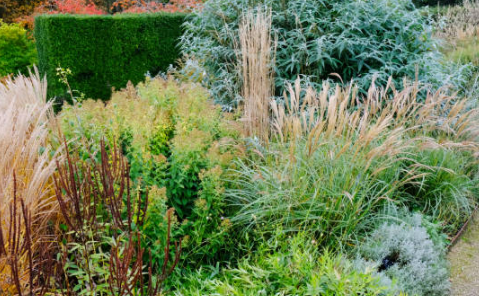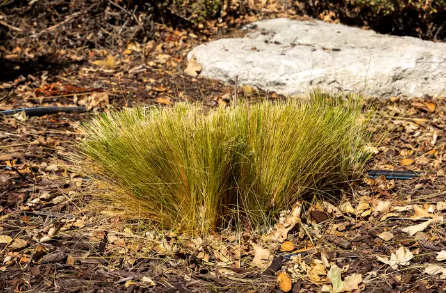“Ornamental grasses” is a broad term used to describe dozens of plants with grass-like appearance and landscape appeal. While many are true grasses (family Poaceae), this group also includes sedges, rushes, and other grass-like perennials. Most ornamental grasses are grown for their foliage rather than their flowers, but once the leaves turn yellow or brown, it’s time to cut them back.
These plants add unique texture, movement, structure, and even sound to gardens—especially when swaying in the breeze. Many ornamental grasses are native species, making them popular choices for gardeners focused on natural, drought-tolerant landscaping. Trimming back dead foliage can be a bit of a chore, but with the right techniques, it’s manageable and even satisfying.
When to Prune Ornamental Grasses
Most ornamental grasses should be pruned in either spring or fall, depending on the type of grass and your landscape goals. Ornamental grasses fall into three categories: warm-season, cool-season, and evergreen.

Warm-Season Grasses
Warm-season grasses can be cut back in late spring or fall, depending on the look you want. If you prefer a tidy winter garden or the grasses look messy after going dormant, prune them in fall. However, if you like the winter interest they add—like movement and structure—wait until mid to late spring to prune them.
Warm-season grasses start growing in mid- to late spring or even early summer. They thrive in warm weather and reach peak growth and bloom during the heat of summer. In winter, they turn brown and go dormant.
How to prune: Cut them all the way back to the ground in spring or fall.
Common warm-season grasses include:
-
Northern sea oats (Chasmanthium)
-
Maiden grass (Miscanthus spp.)
-
Hardy pampas grass (Erianthus)
-
Fountain grass (Pennisetum)
-
Switchgrass (Panicum)
-
Prairie cordgrass (Spartina)
Cool-Season Grasses
Cool-season grasses should be pruned in early spring. These grasses grow best during cool temperatures—in spring before it gets too hot (above 75°F) and again in fall as temperatures cool. They don’t grow much in summer but tend to keep their color.
How to prune: Cut back by two-thirds, leaving the top third intact. Cutting too short can damage the plant.
Examples of cool-season grasses include:
-
Fescues
-
Blue oat grass (Helictotrichon)
-
Tufted hair grass (Deschampsia)
-
Autumn moor grass (Sesleria)
Evergreen Grasses
Evergreen grasses usually don’t need regular pruning, as they retain their good looks through most of winter. That said, if they need a trim, late February or early March is the best time.
These grasses grow year-round and maintain their shape and color through all seasons.

How to Prune Ornamental Grasses
Bundle the Grass First
The bushier the grass, the more challenging it is to prune. Wear gloves to protect your hands, and start by tying the grass into bundles using strong, sticky tape or reusable elastic garden ties. Biodegradable paper tape is a good eco-friendly option.
For taller grasses, you may need to secure each clump in two or three places along the stems. If the plant is very dense, divide it into smaller sections before tying.
Cut the Grass Down
With the grass bundled neatly, use pruning shears or garden loppers to cut it back. For cool-season grasses, trim down by about two-thirds. For warm-season grasses, cut them nearly to the ground. Tilt the bundle away from the base as you cut to make cleanup easier.
For large or thick grasses, electric hedge trimmers can speed up the job. No matter the method, try to keep the bundles intact during cutting.
Clean Up
Most of the work is done once each bundle is cut, but expect a few loose blades around the edges. Tidy up with hand pruners and finish by raking out any fallen debris from the garden bed.
If you used biodegradable ties or string, the entire bundle can be tossed into a compost pile or yard waste bin. If you used vinyl tape, be sure to remove it before disposing.

